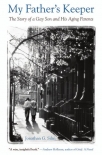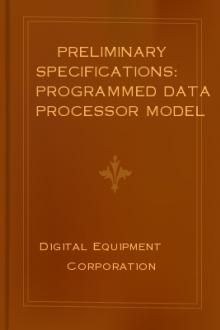My Father's Keeper: The Story of a Gay Son and His Aging Parents, Jonathan Silin [uplifting novels .TXT] 📗

- Author: Jonathan Silin
Book online «My Father's Keeper: The Story of a Gay Son and His Aging Parents, Jonathan Silin [uplifting novels .TXT] 📗». Author Jonathan Silin
what we were to see before crowding onto the city bus that would take us directly across the park to the YIVO.
It’s all slightly shabby; those large, high-ceilinged rooms with elaborate wood paneling and heavy, faded red draperies to shield the display cases from direct sunlight were expensive to maintain even then, I suppose. Here is memorabilia from shtetl life and the thriving Yiddish culture of eastern Europe: diaries and letters, Torahs and tallisim, Kiddush cups and prayer books. Like the upstairs rooms, the basement exhibit areas are cool and dark, but the space has low ceil-ings and is cramped. It feels completely utilitarian. And in these display cases are the infamous bars of soap made from the ash of concentration camp crematoria, the lampshades made from the stretched skin of inmates, and the photographs of emaciated children and adults with shaven heads, bare feet, and striped pajamas either too big or too small for even these skeletal bodies. We move from case to case, our small group of eight or nine huddled together, understanding and not understanding all at the same time. Our teacher, a tall, attractive, middle-aged Sabra, whose son is in the Israeli army and who becomes anxious with the news of every border skirmish, is beside us. I don’t know what she is thinking. She isn’t saying anything, at least anything I can recall.
I remember that morning as a profoundly disturbing introduction to the methodical and mundane practices of the Third Reich. The collections of wedding rings, gold fillings, and eyeglasses tell me that attention was paid to the very last detail. The pictures of German soldiers and SS officers, the former in long woolen army coats and the latter in black leather, rounding up civilians in city streets, tell me that there was little chance of escape. Other photographs, of people clutching suitcases and children, anxiously waiting to be transported or arriving at final destinations, lined up sometimes clothed and sometimes totally naked, make the abstract and unimaginable graphically real. Trying to regulate the impact of these images, I neither look directly at them nor turn completely away. I don’t understand my relationship to these people who appear so different from me and oc-m y fat h e r ’ s k e e p e r n 95
cupy such bleak, threatening landscapes. Beyond the identifying label, Jew, what can we possibly have in common? Surely I will not share the same fate. I am frightened into a silence that makes it impossible, even today, to find the right words to describe my confusing emotions. Can there be right words? How can something that is such a muddle be so important?
At times I wonder if my memories of the YIVO are to be trusted.
They are powerful and unsettling. They are hazy and lack detail. Perhaps I have imbued this early experience with images and feelings acquired later. Perhaps the dreams in which I am on my own, hiding in strange apartments, running through ominous city streets, seeking anonymity in large, open train sheds, and waking up just moments before capture by the Gestapo, are the result of too many war movies, not my YIVO visit. Perhaps they date from a trip to Munich at age eighteen when I was overwhelmed by the sounds of the German language coming from loudspeakers on busy train platforms and read every face for indications of anti-Semitism. Can the YIVO be only an emblem, a container into which I have poured emotions and images collected in other places, at other times? The murky pool of memories that I draw on gives rise to strong emotions but few explanations.
Eventually the YIVO building was transformed into the elegant Neue Galerie Museum for German and Austrian Art. Unspoken during my adolescence was another connection to the YIVO, with its origins in Vilna circa 1925, its governing board that included Sigmund Freud, and its relocation to New York during World War II. Vilna, then part of Lithuania, had a thriving intellectual life and was the very same city from which my father’s father had immigrated decades before. Now in New York, my family had found itself just two blocks from a venerable Jewish archive with its roots in the same physical and cultural geography.
As I wait on the corner that night looking at the former YIVO building, reexperiencing that troubling Sunday morning visit, I also realize how, over the years, I have watched my parents’ participation in Jew-96 n jonathan g. silin
ish life decline. Recently, every suggestion that they visit a neighboring synagogue has been gently but firmly rebuffed. Neither of my parents will be seen in a wheelchair. This reflects a self-defeating pride as well as fear of drawing attention to themselves. My mother’s resistance is not surprising, as her Jewish commitments have clearly always revolved around home and family, holidays and celebrations, rather than the synagogue. Memories of my father, however, tell another story of a fuller religious life, a life that I hoped would offer some succor in these last difficult years.
As a young man my father was observant, rising early every morning to say prayers, bound in tefillin, the small phylacteries containing sacred texts. When his mother died he went to shul each morning for an entire year, as traditional practice demands. I was six at the time and remember seeing him return to the





Comments (0)